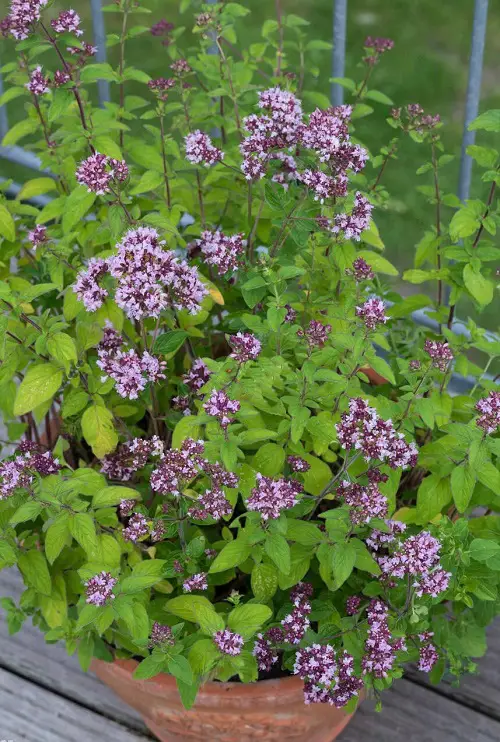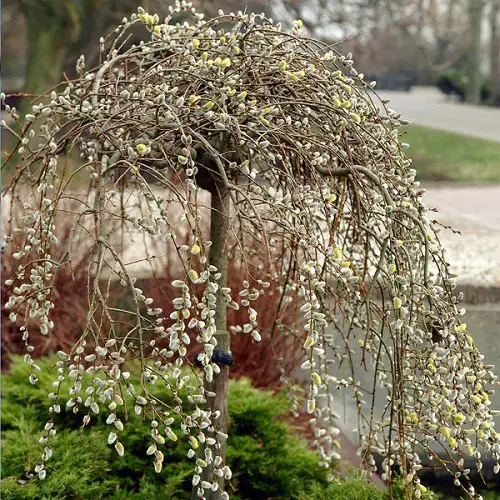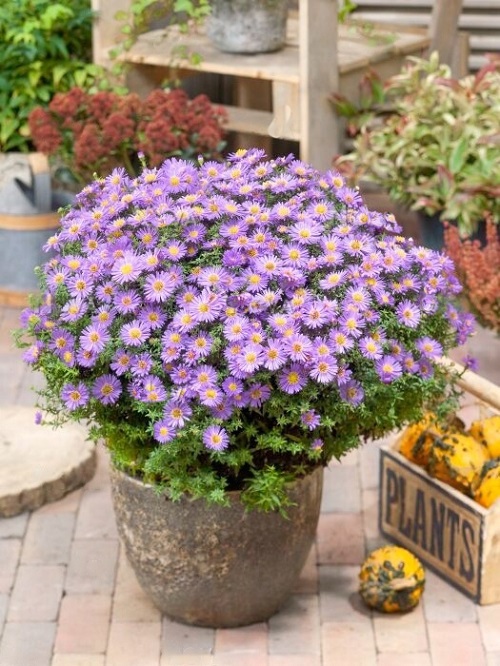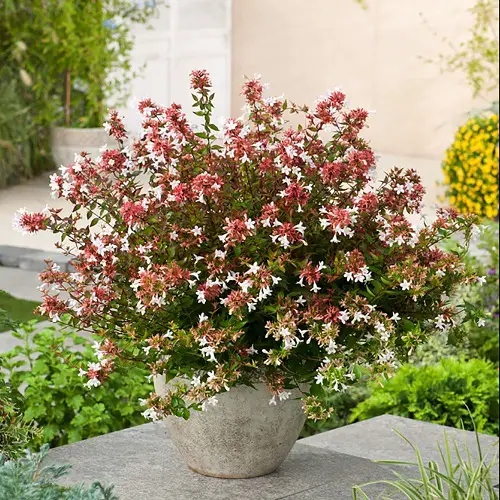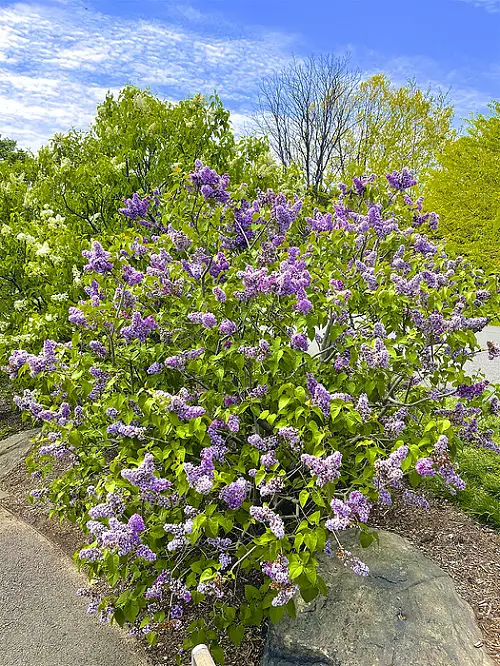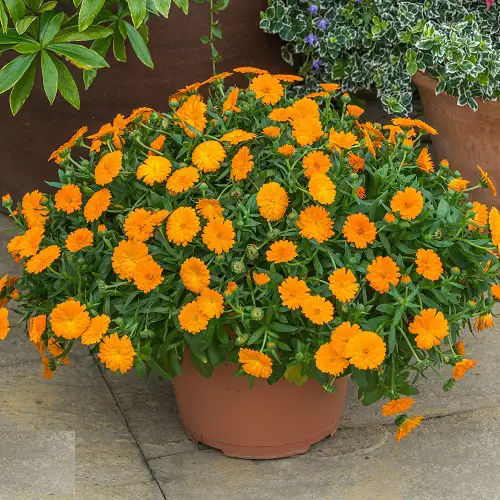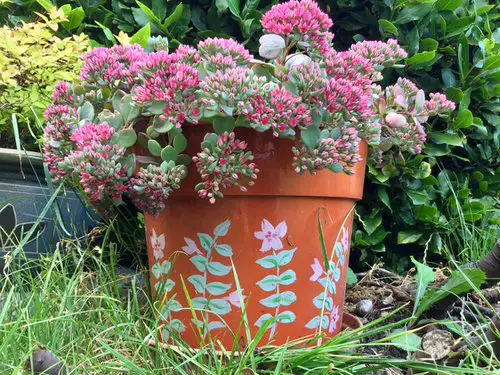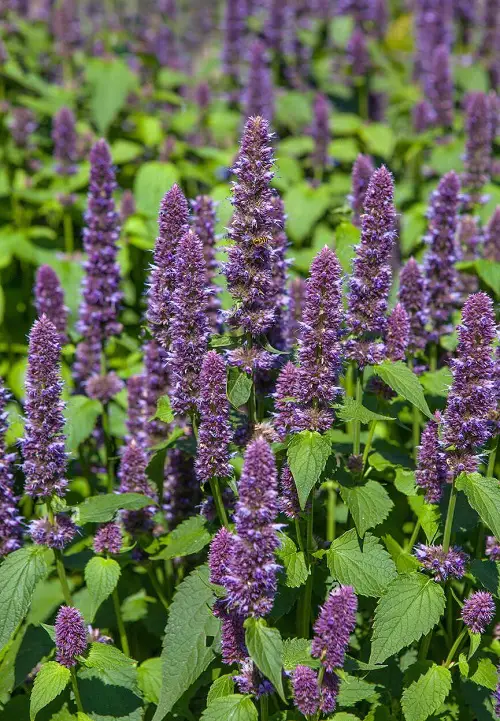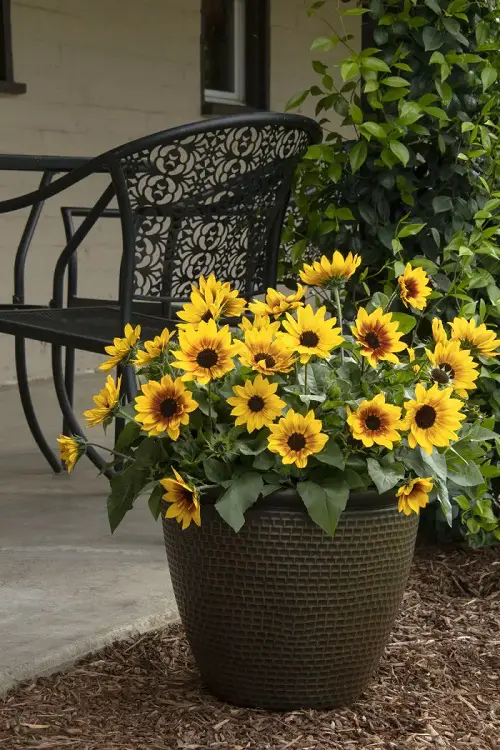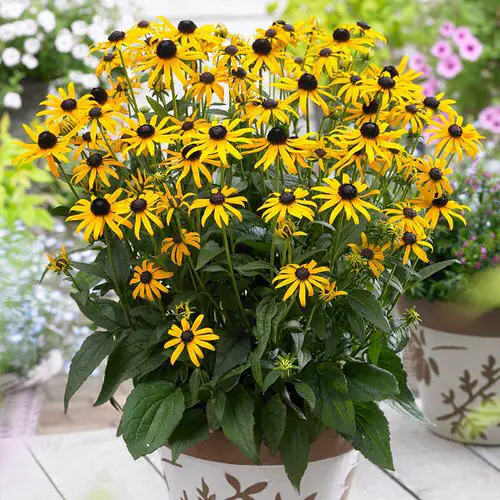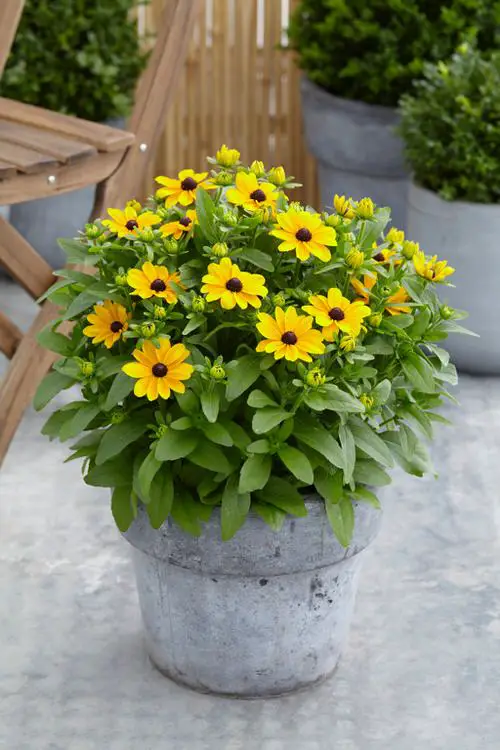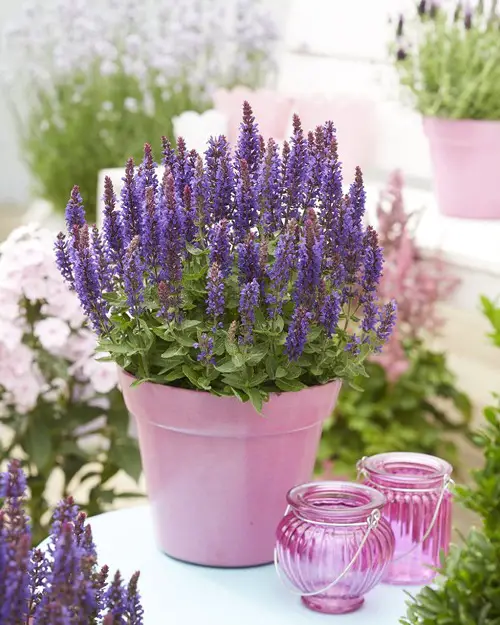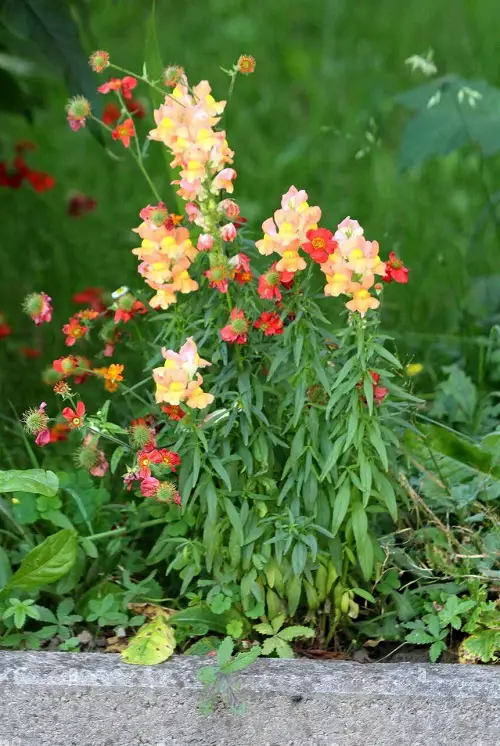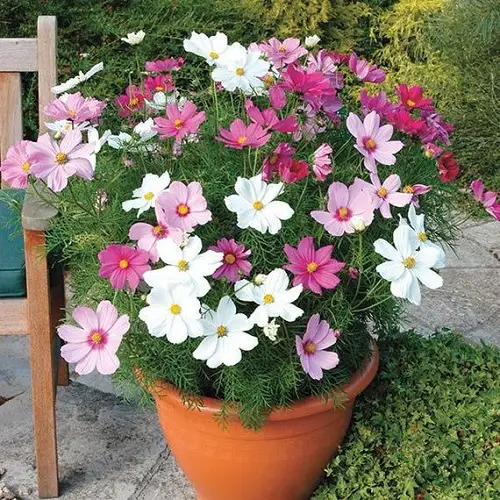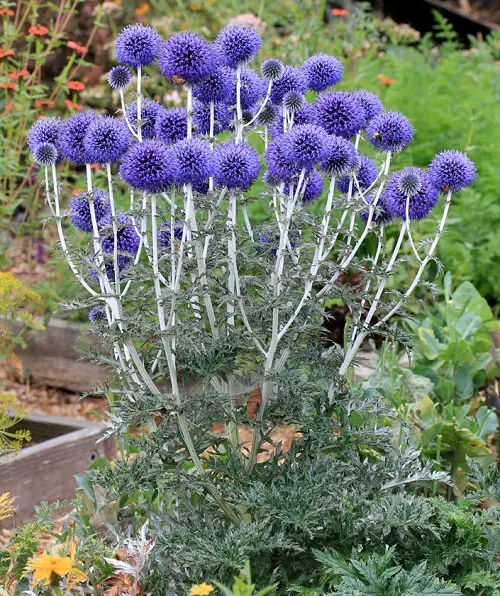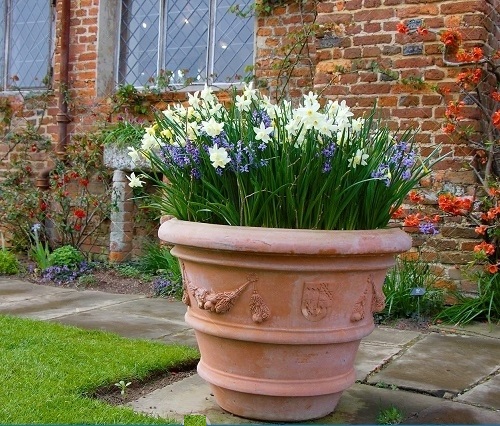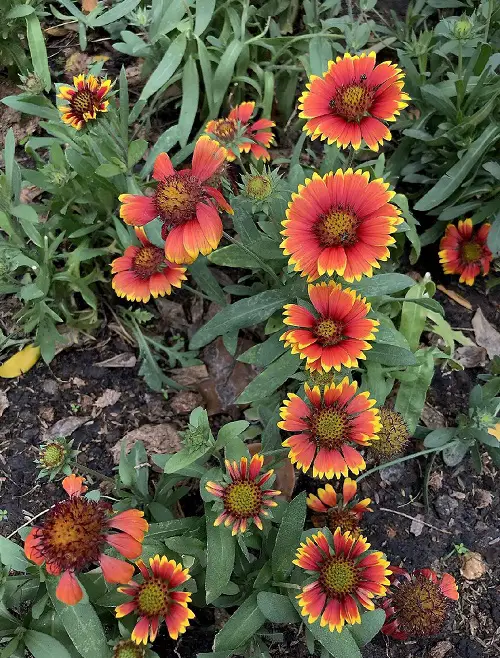Did you know you could grow the Plants that Attract Bees and increase their productivity? Plus, the bees will help you get more flowers, too!
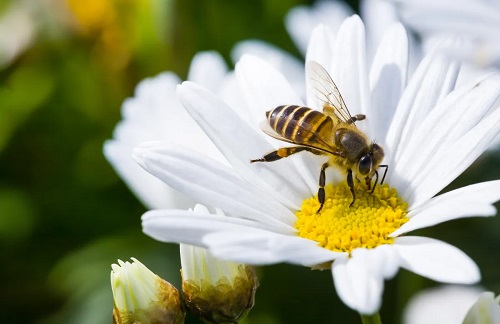
Want to turn your yard into a bee haven? Our Bee Friendly Plants guide will show you the Best Plants that Attract Bees so you can enjoy a blooming garden full of healthy foliage.
What Colors Attract the Bees Most
Bees see the world differently than we do! They love bright, cheerful colors like blue, purple, and yellow. Think of pretty summer blooms—those are the ones that catch a bee’s eye (or should we say, bee’s many eyes?). And here are the colors bees hate so you also know which ones to avoid.
Best Plants that Attract Bees
1. Marjoram
Botanical Name: Origanum majorana
USDA Zones: 9-10
Marjoram is a bee magnet for many reasons—it has nectar-rich flowers and it also has an irresistible aroma that is attractive to bees, even from a distance.
2. Lavender
Botanical Name: Lavandula angustifolia
USDA Zones: 5-8
Lavender plants are rich in linalool, which is a fragrant oil with a lovely fragrance. Bees come running for this one, or rather, flying.
3. Fennel

Botanical Name: Foeniculum vulgare
USDA Zones: 4-9
Fennel has bright yellow flowers that shine under the sun. If you want bee-friendly plants, go with this one because it also has a long blooming season.
4. Pussy Willow
Botanical Name: Salix discolor
USDA Zones: 4-8
Pussy Willows have soft, furry buds that attract plenty of bees. These flowers are one of the first to bloom in spring and bees come to these for energy after their hibernation.
5. Heliotrope
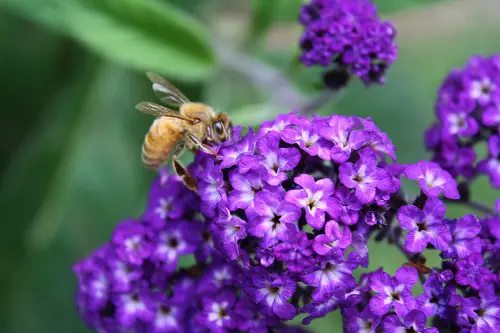
Botanical Name: Heliotropium arborescens
USDA Zones: 10-11, annual elsewhere
Heliotropes are a great choice if you want to charm bees. These flowers have colors flowers of purple, violet, and white shades and are open–so bees can easily get to their centers.
6. Crocus

Botanical Name: Crocus
USDA Zones: 3-8
Crocus flowers are also early bloomers of spring and are one of the few choices for bees during this time because other flowers haven’t opened yet. Bees also love it because it produces both nectar and pollen.
7. Aster
Botanical Name: Aster
USDA Zones: 4 to 9
Asters are champions of late-blooming flowers, providing a much-needed food source for bees when many other flowers have faded. Plus, it’s a versatile option for your lawn.
8. Abelia (Bee Bush)
Botanical Name: Abelia x grandiflora
USDA Zones: 6-9
Bee Bushes are named so for a reason. These flowers bloom from early summer to fall and are packed with nectar, which bees love.
9. Lilac
Botanical Name: Syringa vulgaris
USDA Zones: 3-8
Lilac flowers have a vibrant purple color that bees love but the scent is not so good for bees, even if it smells sweet to us. Lilacs will attract bees to your garden but not as much as others.
10. Chives

Botanical Name: Allium schoenoprasum
USDA Zones: 3-9
Chives are wonderful flowering herbs with little purple pom-pom-like blooms that bees love. Plus, the flowers have an open structure so bees can easily consume the nectar.
11. Goldenrod
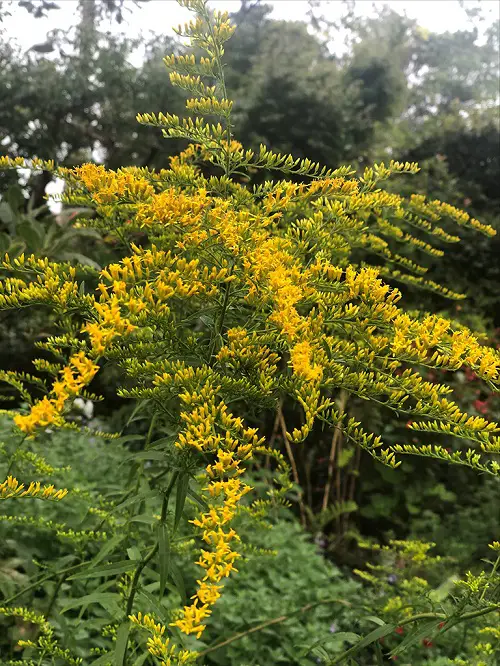
Botanical Name: Solidago
USDA Zones: 3-10
Goldenrod flowers bloom late in the season which helps bees build up their reserves for the coming winter when they will hibernate. You should definitely grow them.
12. Bee Balm
Botanical Name: Monarda
USDA Zones: 4-9
Bee Balm doesn’t just attract honeybees; it is also great for hummingbirds and butterflies. And you can always use the leaves to make tea. Amazing, right?
13. Calendula
Botanical Name: Calendula officinalis
USDA Zones: 9-11
Calendula is not just an edible flower that you can used to flavor stews, these flowers also provide nectar for bees and will surely attract them.
14. Sedum
Botanical Name: Sedum
USDA Zones: 3-10
Sedum flowers are tempting for bees because they have both nectar and pollen. And that, too, in late summer and fall when other flowers might be dwindling.
15. Catmint
Botanical Name: Nepeta x faassenii
USDA Zones: 3-8
Catmint is a drought-tolerant plant that attracts bees and will also bring stray cats to your garden. Plus, the blue flowers it produces are really pretty.
16. Borage
Botanical Name: Borago officinalis
USDA Zones: 2-11
Borage is a champion when it comes to attracting bees and for good reason, it has cucumber flavored edible leaves for you and star-shaped flowers that replenish their nectar quickly for bees.
17. Foxglove
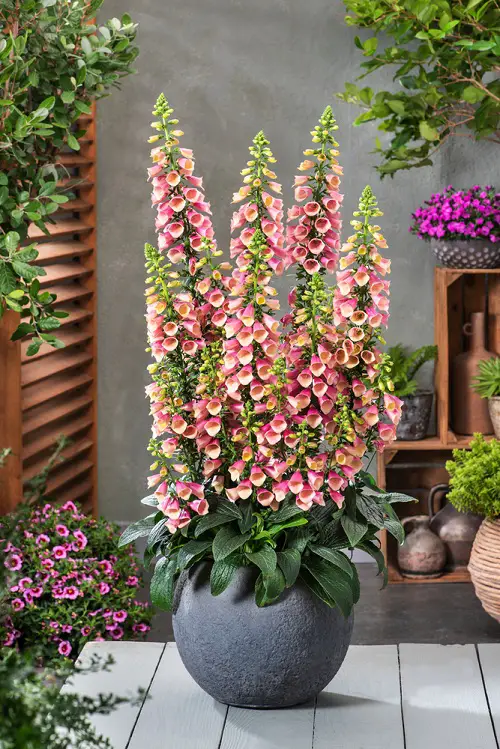
Botanical Name: Digitalis purpurea
USDA Zones: 4 to 9
Foxglove flowers attract bees but not just with their nectar. The nectar contains small amounts of digitalin–a compound that is rumored to be intoxicating for bees.
18. Anise Hyssop
Botanical Name: Agastache foeniculum
USDA Zones: 4 to 8
Anise plants attract many bees and are packed with nectar. The flowers are tubular-shaped and are easy for bees to get into. And they spread a sweet fragrance.
19. Joe Pye Weed
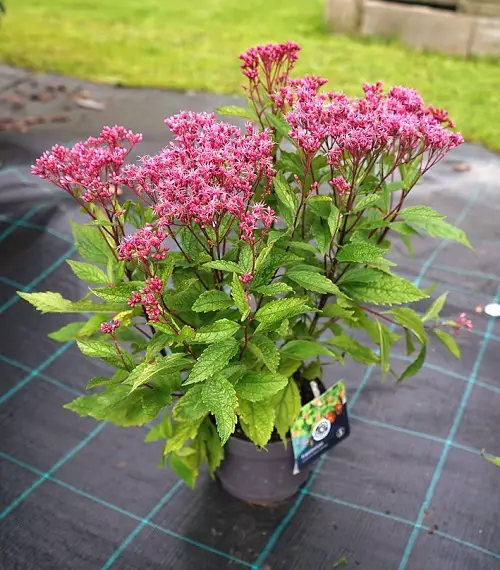
Botanical Name: Eupatorium purpureum
USDA Zones: 3 to 9
Joy Pye Weed is actually a wildflower that can grow up to 9 feet tall so be careful when choosing this plant for attracting bees to your garden.
20. Sunflower
Botanical Name: Helianthus
USDA Zones: 4-9
Sunflowers are the best. They grow easily, tolerate many different kinds of soil, and can be planted anywhere. Plus, the large flowers act as yellow beacons for bees.
21. Coneflower
Botanical Name: Echinacea purpurea
USDA Zones: 3-8
Coneflowers tempt bees, butterflies, and even hummingbirds with their nectar-rich flowers. The ray florets don’t completely enclose the central cone, allowing bees of different kinds to reach the nectar-producing disc florets at the center easily.
22. Phlox
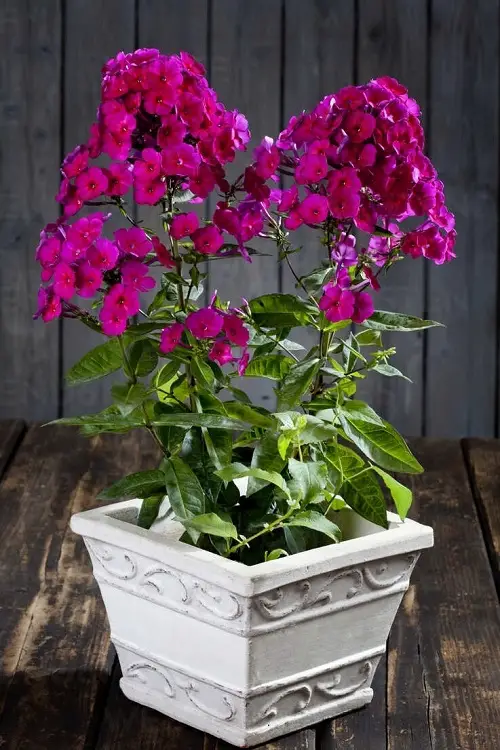
Botanical Name: Paniculata
USDA Zones: 3-9
Phlox has clusters of bright flowers that grow low to the ground. Bees, especially the short-tongued bumblebee can reach the center of these small flowers without hassle.
23. Black Eyed Susan
Botanical Name: Rudbeckia
USDA Zones: 3-10
Black-eyed Susans aren’t shy about giving delicious nectar to pollinators. The central “eye” of the flower is actually a cluster of tiny florets, each one packed with it.
24. Rosemary
Botanical Name: Salvia rosmarinus
USDA Zones: 7-10
Rosemary is drought tolerant, has a long flowering season, gives pollen and nectar, and has pretty flowers. What more could you want from a plant to attract bees?
25. Sage
Botanical Name: Salvia officinalis
USDA Zones: 5-8
Sage is another bee favorite, but sometimes, the bees might choose another plant to get nectar from because the petals of Sage plants form a hood over the stamens and stigmas where it is stored, making it difficult to reach.
26. Lemon Balm
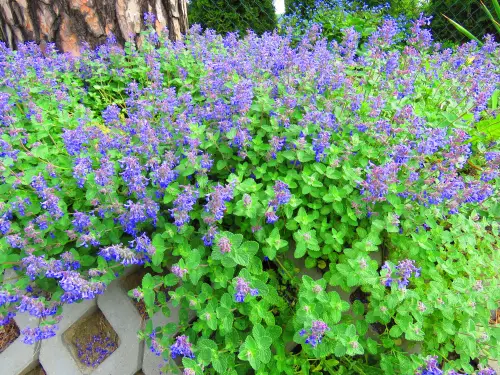
Botanical Name: Melissa officinalis
USDA Zones: 3-7
Lemon Balm leaves give off a lovely scent when you crush them between your fingers. It will also attract plenty of bees with its lemony scent and pollen.
27. Thyme

Botanical Name: Thymus vulgaris
USDA Zones: 5-9
You should plant Thyme in paving, near pathways, or grow it in pots. It will fill the air with its fragrance and will bring bumblebees, honeybees, leafcutter bees, and mason bees.
28. Sweet Alyssum
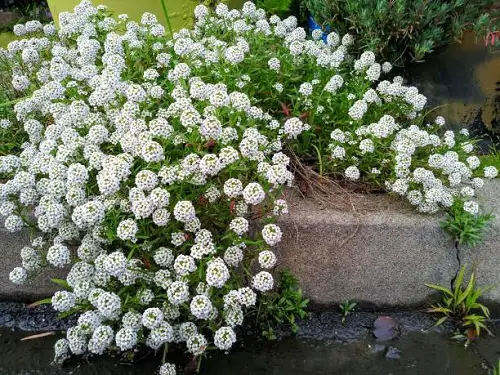
Botanical Name: Lobularia maritima
Gardeners love this low-growing annual; the flowers of Sweet Alyssum bloom almost all seasons and bring tons of the bees to your garden.
29. Snapdragon
Botanical Name: Antirrhinum majus
USDA Zones: 7-11
Snapdragons serve as food for bees during the cool months. And their yellow flowers look really pretty in the garden.
30. Cosmos
Botanical Name: Cosmos bipinnatus
USDA Zones: 2-11
Cosmos has open flowers in pretty colors, so bees can get nectar from the central disc easily. These flowers can also tolerate all soil types.
31. Helenium
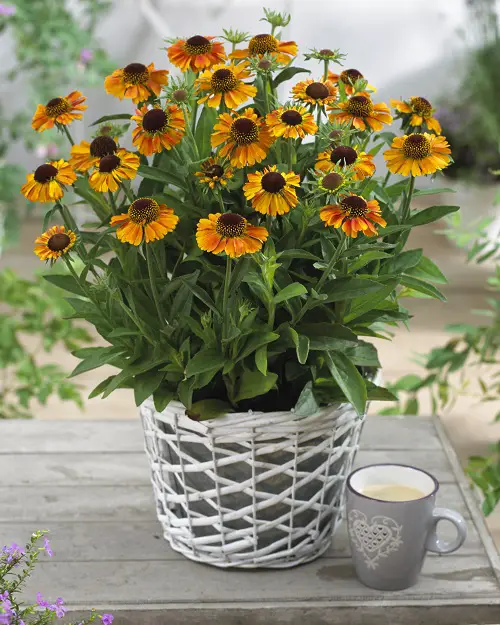
Botanical Name: Helenium autumnale
USDA Zones: 3-9
Heleniums are just like sunflowers–yellow and bright. They also produce nectar continuously, unlike other flowers, so bees always come where it is planted.
32. Larkspur
Botanical Name: Consolida ajacis
USDA Zones: 3-9
Larkspur plants attract bees with their flowers. They can be blue, purple, and even pink. If you’re planting these, go with the Bee Larkspur–it has trumpet-shaped flowers.
33. Pansy
Botanical Name: Viola tricolor
USDA Zones: 4-8
Pansies have large, velvety petals that serve as a spacious landing platform for bees of all sizes. They also have an extended blooming season, starting in early spring and lasting through fall.
34. Coreopsis

Botanical Name: Coreopsis grandiflora
USDA Zones: 3-9
Coreopsis flowers are bright yellow and they attract all kinds of bees to themselves, even humans. They’re gorgeous and provide pollen throughout their growing season. Nectar, too.
35. Globe Thistle
Botanical Name: Echinops ritro
USDA Zones: 3-8
Globe Thistles are a treasure chest of nectar that’s nestled deep within their spiky florets. But bees come looking for it and have a special talent for finding it, too.
36. Zinnia
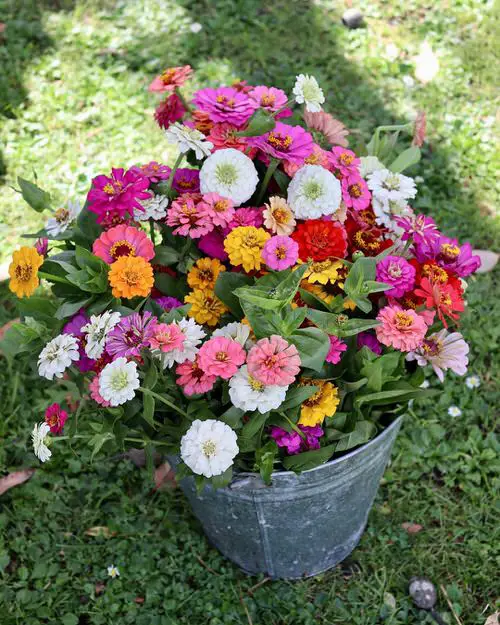
Botanical Name: Zinnia elegans
USDA Zones: 3-10
Zinnias are known for their extended blooming season, typically lasting from mid-summer to frost. These flowers also come in many colors, and bees love them.
37. Snowdrop
Botanical Name: Galanthus nivalis
USDA Zones: 3-7
Snowdrops are also some of the first flowers that emerge when spring comes, so they’re a welcome sight for bees after a long winter.
38. Creeping Thyme
Botanical Name: Thymus serpyllum
USDA Zones: 4-8
Creeping Thyme’s fragrant, purple flowers produce nectar and pollen. These flowers provide reliable food to bees which makes them a one-stop shop for bee sustenance!
39. Yarrow
Botanical Name: Achillea millefolium
USDA Zones: 3-9
Yarrow is also a wildflower that attracts bees. It might not be the most irresistible bee magnet but it does give nectar and pollen. It’s not great for short-tongued bees because the flat flower heads cover the stamens.
40. California Poppy
Botanical Name: Eschscholzia californica
USDA Zones: 6-10
California Poppies are not a major source of nectar for bees because they don’t produce much of it. But they make up for the loss by producing tons of pollen.
41. Baby Blue Eyes
Botanical Name: Nemophila menziesii
USDA Zones: 3-9
Bees cannot see red, but they are particularly drawn to colors in the blue/violet spectrum, so they adore Baby Blue Eyes flowers.
42. Marigold
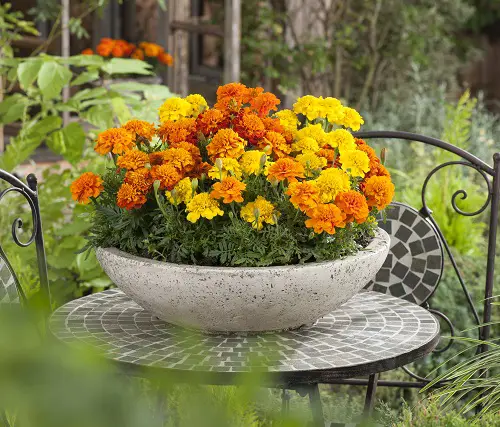
Botanical Name: Tagetes erecta
USDA Zones: 2-11
Marigolds, particularly single-flowered varieties, produce a decent amount of nectar that’s a valuable source of energy for bees. You can also grow unlimited marigolds from just their petals.
43. Blanket Flower
Botanical Name: Gaillardia pulchella
USDA Zones: 3-10
There are around 25-30 species of Blanket flowers and most of these are great for attracting butterflies and bees. They are also pest and disease resistant.
44. Moringa

Moringa blooms are also the favorite of bees, and they simply love to buzz around its flowers. As long as you have a bright spot, this plant will continue to thrive.
45. Citrus Flowers
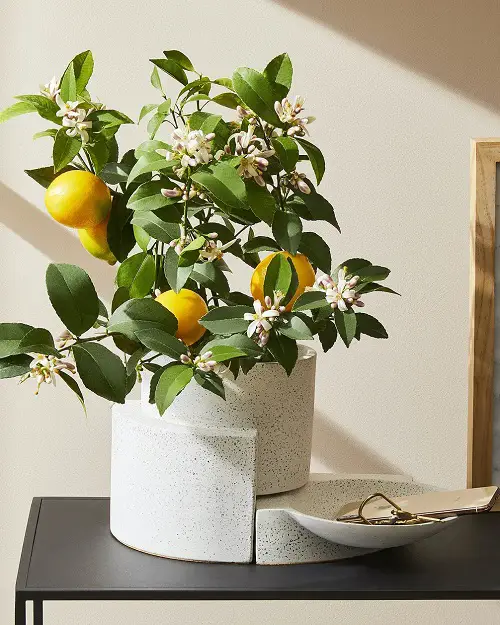
Citrus flowers have a citrusy scent that’s quite strong. It can tempt bees from a distance, and they play an important role in pollinating the flowers and setting the fruits.
46. Wild Rose

Wild Rose flowers are also called Roses of the Woods. These flowers are hardy, resistant, and need little maintenance. Plus, they attract bees with their scent.


